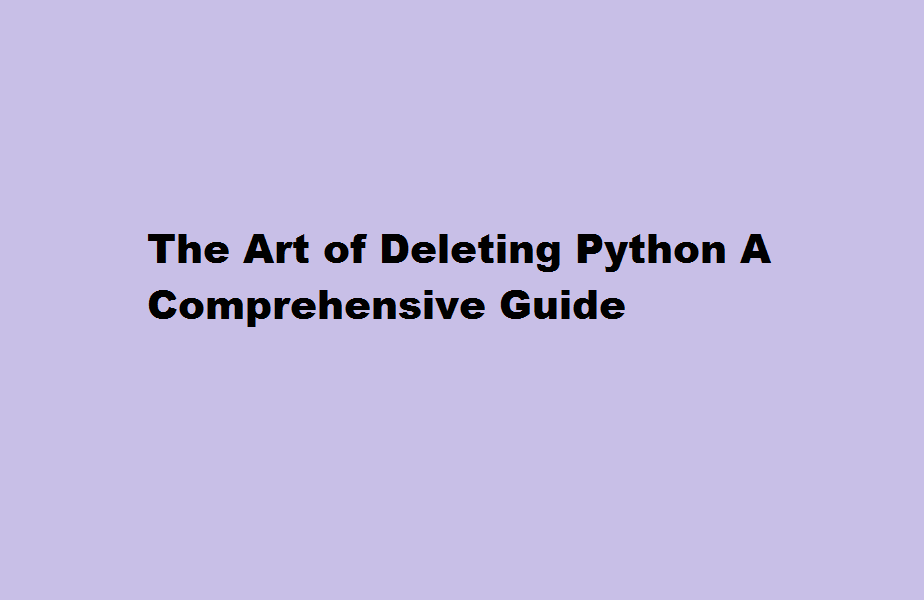The Art of Deleting Python A Comprehensive Guide
3 min read
Introduction
Python, one of the most popular programming languages, has found its way into countless software projects and applications. But what if you find yourself in a situation where you need to delete Python from your system? Whether it’s to make space, upgrade to a different version, or start from scratch, this article will guide you through the process. In the following 700 words, we will explore the steps required to uninstall Python completely, covering various operating systems and offering valuable tips along the way.
Uninstalling Python on Windows
If you’re a Windows user, removing Python involves a few straightforward steps. Start by accessing the “Control Panel” and navigating to the “Programs” section. From there, select “Uninstall a program” and locate Python in the list of installed applications. Right-click on Python and choose “Uninstall.” Follow the on-screen instructions, and Python will be removed from your system. Remember to also delete any leftover Python folders or paths from your environment variables.
Removing Python on macOS
Mac users can delete Python by following a similar process. Open the “Finder” and navigate to the “Applications” folder. Locate the Python application, right-click on it, and select “Move to Trash.” Additionally, it’s advisable to remove any Python-related paths or configurations in your shell profile file. This step ensures a clean removal and prevents conflicts with other versions of Python that you might install in the future.
Uninstalling Python on Linux
Linux users typically have Python pre-installed. However, if you installed Python manually or via package managers like apt or yum, the removal process varies slightly. To uninstall Python, open the terminal and execute the appropriate command based on your distribution. For example, on Ubuntu, you can use “sudo apt-get purge python” to remove Python and its associated packages. Make sure to check for any residual Python files or directories after uninstallation, and delete them manually if necessary.
Tips for a Clean Removal
Regardless of the operating system, there are a few additional steps to ensure a thorough uninstallation of Python. First, back up any Python scripts or projects you want to keep. Next, remove Python-related environment variables, including paths in your system’s “PATH” variable. It’s also advisable to remove any Python-related entries from your package manager’s configuration files. Finally, perform a system-wide search for any remaining Python files or directories and delete them manually.
Frequently Asked Questions
How do you delete in Python?
Using the ‘del’ command is the most known and easiest method to delete variables in Python. The del keyword deletes the objects. Since everything in Python is an object, therefore lists, tuples and dictionaries can also be deleted using ‘del’.
Conclusion
Deleting Python from your system is a task that may arise in various scenarios, and this article has provided a comprehensive guide to assist you in this process. We explored the steps involved in uninstalling Python on Windows, macOS, and Linux, along with additional tips for a clean removal. By following these instructions, you can confidently remove Python from your computer, freeing up space, upgrading to a different version, or starting afresh. Remember to exercise caution and back up any critical files before proceeding with the deletion process.
Read Also : Simplifying Calculations How to Exclude GST from Amount in Excel






